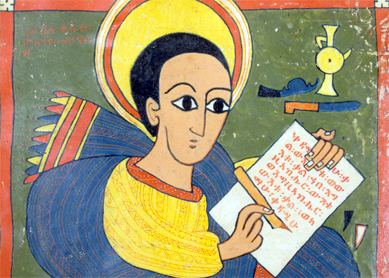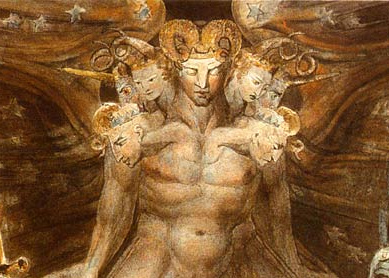Who is the Antichrist?
Fascination with the figure of the “antichrist” (antichristos) developed in the early postbiblical tradition (especially early Christian apocalyptic writings) and continues to this day, especially in some Protestant Dispensationalist circles. There is a long tradition of attempts to identify this individual: popes, reformers, political leaders ancient and modern—all have featured in an endless list of candidates for the role. Sometimes the term has also been deployed as a tool to “other” certain groups, often with an anti-Jewish or anti-Semitic bias.
The New Testament, however, has relatively little to say about the antichrist, which may come as a surprise given how powerfully the idea has grabbed the imagination over the centuries. The word itself only appears in four verses of the New Testament, in the letters of John (1John 2:18; 1John 2:22; 1John 4:3, 2John 1:7) and not in the book of Revelation, as is sometimes assumed. Jesus uses similar language to warn about “false Christs” (pseudochristoi) in the apocalyptic discourses of the Synoptic Gospels (Mark 13:22), and perhaps there are both similarities and differences. The idea may also lie behind Paul’s “man of lawlessness” in 2Thess 2:1-12.
Taking Christos, Messiah, to be something like Jesus’s title or an honorific, it is logical to read antichristos as its opposite, naming a figure who is the opponent of the Messiah. It is not surprising, then, that the focus of much discussion has been the identification of an individual whose arrival was expected in the last days and who would herald Christ’s return. In the face of such readings, there are some important features to note about the New Testament’s use of the term antichrist.
How does the New Testament use the word?
First, the word is more often used in a plural rather than singular sense, such that the focus is on a category rather than an individual. When John first speaks of antichrist (1John 2:18) he does not say “the Antichrist” but “antichrist,” and immediately he adds that “many antichrists” have already come. A similar plural idea is found in his second letter, where he says of false teachers that “any such person is the deceiver and the antichrist” (2John 1:7). Second, both John and Paul (if we take Paul’s “man of lawlessness” in 2Thess 2:1-12 to be essentially synonymous with “antichrist”) speak of “antichrist” as coming in the last hour, but, perhaps more significantly, he is already in the world (1John 4:3; 2John 1:7, compare 2Thess 2:7).
John’s explanations help us understand how this works. For John, antichrist refers to any false teacher or group of teachers who denies that Jesus is the Messiah (1John 2:22) and that he has come in the flesh (2John 1:7). These false teachers had once been part of the community (1John 2:19) but were now in the world as antichrists, Christ-deniers, having been inspired by an antichrist.
Bibliography
- Lieu, Judith I, II and III John: A Commentary. New Testament Library. Louisville: Westminster John Knox, 2008.
- Jobes, Karen. 1, 2, and 3 John. Zondervan Exegetical Commentaries on the New Testament. Grand Rapids: Zondervan, 2014.
- Campbell, Constantine. 1, 2, and 3 John. Story of God Bible Commentary. Grand Rapids: Zondervan, 2017.
- McGinn, Bernard. Antichrist: Two Thousand Years of the Human Fascination with Evil. San Francisco: HarperOne, 1994.





